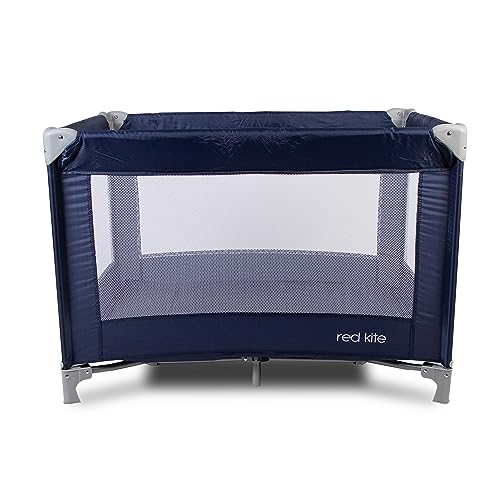Five Killer Quora Answers On Tots And Cots
페이지 정보
작성자 GL 작성일25-08-11 00:00 (수정:25-08-11 00:00)관련링크
본문
Tots and Cots: A Comprehensive Guide for Parents
When it concerns making sure a safe and comfy sleeping environment for babies and toddlers, the options parents make-- ranging from cribs to cots-- can significantly affect their well-being. Today's post dives deep into the intricacies of choosing the best sleeping arrangements for tots, stressing safety, style, performance, and how these options develop as a child grows.
Comprehending Tots and Cots
Tots and cots typically describe young kids, especially toddlers aged in between 1 to 3 years, while cots are the sleeping plans particularly created for babies and young children. The proper sleeping equipment for this age includes various types of cots, cribs, and young child beds.
Types of Cots
Numerous styles exist to fulfill the diverse requirements of both parents and kids. Below is a list outlining the most typical kinds of cots available:
Standard Crib
- A traditional crib is created for babies and normally includes sides that can be adapted to different heights.
Convertible Crib
- This kind of crib can transform into a young child bed, daybed, or full-sized bed as the kid grows, making it a long-lasting financial investment.
Portable Crib

- Also known as travel cots, these are light-weight and easily collapsible, ideal for traveling or smaller home.
Co-Sleeper
- A co-sleeper crib connects to the side of the moms and dads' bed, enabling easy gain access to while ensuring the baby has a different and safe sleeping space.
Toddler Bed
- A toddler bed is a small bed that resembles a standard bed however is developed specifically for toddlers, generally featuring safety rails.
Mini Crib
- Mini cribs are smaller than standard cribs, making them an excellent alternative for tight spaces, however they appropriate for infants just.
Safety Considerations
Guaranteeing safety is vital when selecting a cot for a kid. Here are crucial security guidelines parents ought to consider:
- Check for CPSC Certification: Ensure that the cot follows the Consumer Product Safety Commission (CPSC) standards.
- Prevent Drop-Sides: Cots with drop-sides have actually been linked to safety hazards, and the latest security regulations prohibit them.
- Use a Firm Mattress: A firm mattress minimizes the danger of suffocation and should fit comfortably within the cot.
- Keep Bedding Simple: Use a fitted sheet and avoid pillows, comforters, and packed animals that can pose suffocation hazards.
- Follow Weight and Age Guidelines: Ensure the child has not surpassed the cot's weight limit and is still within the recommended age.
Transitioning from a Cot to a Toddler Bed
The shift from a cot to a young child bed can be an emotional turning point for both moms and dads and kids. Here are steps to reduce the transition:
Timing
Deciding when to transition can be subjective, but it's generally advised to make the switch between 18 months and 3 years, based upon aspects like:
- Physical Ability: If the child is climbing up out of the cot.
- Potty Training: Consider transitioning if the child is bathroom training and needs easier gain access to.
- Habits: Exhibiting signs of maturity, such as following instructions or expressing a desire for independence.
Tips for Making the Transition Smooth
Include Your Child: Let the child pick their new bed linen or bed decoration to impart excitement about the modification.
Keep Routine Consistent: Maintain the kid's bedtime regimen to offer convenience throughout this duration of modification.
Discuss the Change: Discuss the shift to a toddler bed favorably, making it sound like a terrific experience.
Safety Measures: Place the bed versus the wall or use bed rails to avoid falling throughout sleep.
Picking the Right Bed
When choosing a toddler bed, moms and dads need to consider aspects like:
- Height: Low-profile beds are ideal for toddlers who may fall out throughout sleep.
- Toughness: Ensure the bed can withstand active play in addition to sleep.
- Style and Design: Choose a style that complements the child's room and is appealing to the child.
Picking the best cot for your little one can be a challenging procedure, but understanding the choices offered, crucial security factors to consider, and the ideal timing for transitioning to a young child bed can make this journey simpler for moms and dads. Investing effort and time into these choices will make sure that your kid has a safe, comfy, and supporting sleep environment.
FAQs
1. What is the distinction in between a cot and a crib?
- A cot is generally a smaller bed created for younger toddlers, while a crib is a larger bed that is normally ideal for infants as much as 3 years old.
2. When should I move my kid from a crib to a toddler bed?
- The transition time is generally in between 18 months and 3 years; this modification is based on the kid's physical capabilities and behavioral signs.
3. How can I guarantee my child is safe while sleeping?
- Constantly comply with safety requirements, use a company bed mattress with a simple bed linen plan, and keep an eye on the cot's weight limitation.
4. What should I do if my kid tries to climb up out of the cot?

- If your child is climbing out, it may be time to think about transitioning to a young child bed to avoid falls.
5. Can I utilize the very same mattress when transitioning?
- Generally, it is best to replace the crib mattress with one that specifies to the young child bed. Guarantee it fits snugly and sticks to safety standards.
By thinking about these elements, moms and dads can model healthy sleep practices and supply their kids with a safe environment that promotes peaceful sleep. Purchasing quality sleeping plans will add to the kid's total advancement and happiness.
댓글목록
등록된 댓글이 없습니다.

